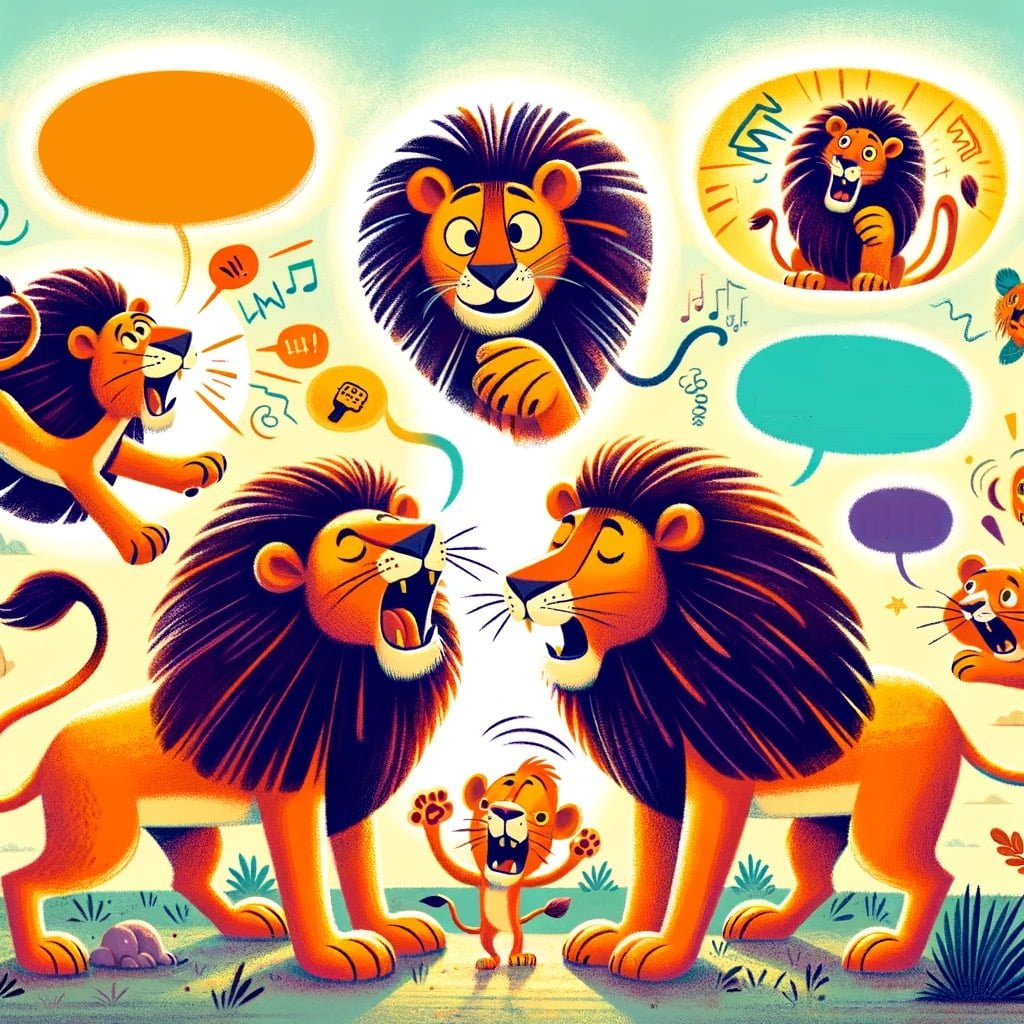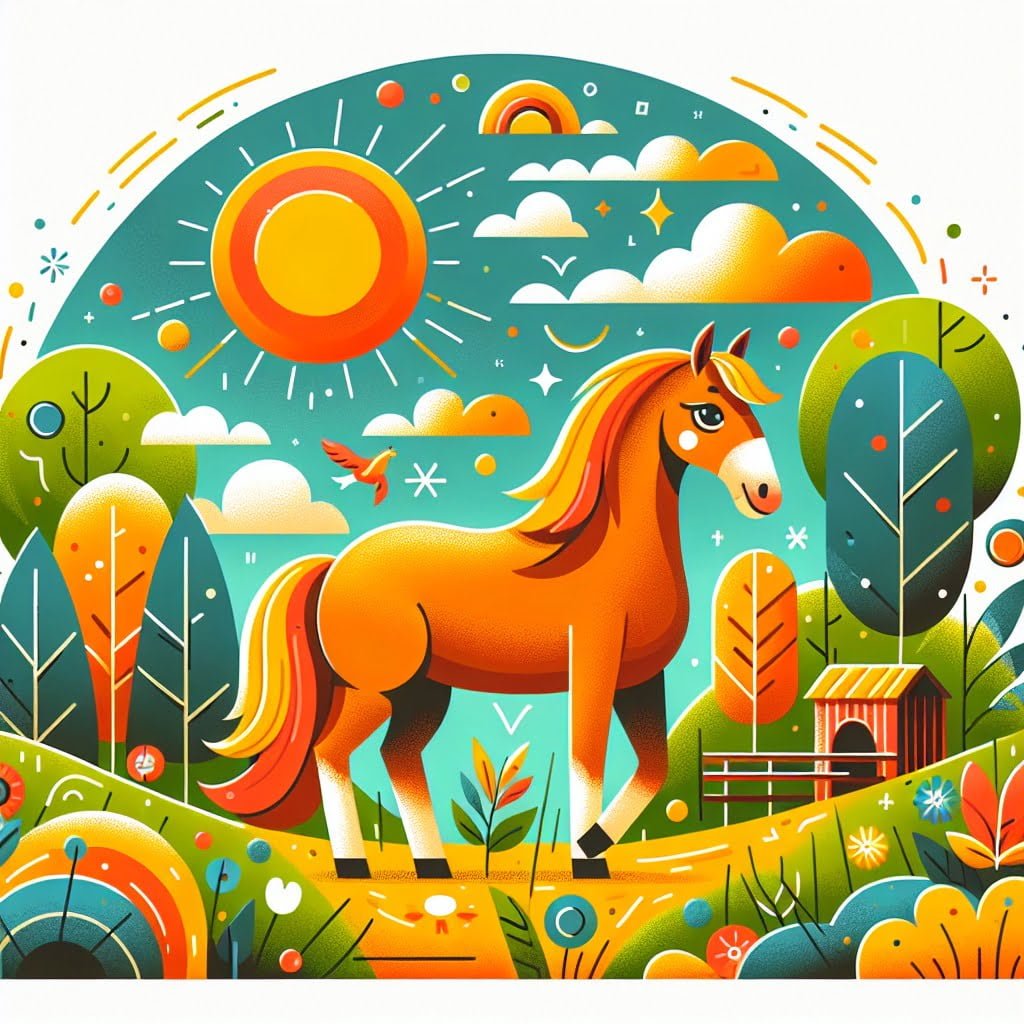Welcome to a captivating exploration of Lion Facts For Kids! Lions are truly magnificent creatures that have captured the hearts and imaginations of people worldwide for centuries. From their powerful roars that can be heard up to 5 miles away, to their incredible hunting skills and unique social behavior, lions never fail to inspire awe and wonder. Join us on this exciting journey as we delve into the fascinating world of lions, uncovering fun facts that will educate, entertain, and inspire young minds. Prepare to be amazed by the remarkable abilities and behaviors of these iconic animals, and gain a deeper appreciation for the importance of protecting these majestic creatures and their habitats. Let’s embark on this thrilling adventure together and discover the incredible world of lions!
Lion Facts For Kids
1. Lion Roars Can Be Heard Up to 5 Miles Away

For younger kids: Lions have really loud roars that they use to talk to each other from far away!
For older kids: The roar of a lion is so powerful that it can be heard from up to 5 miles away, making it one of the loudest animal calls in the world.
Detailed explanation:Lion Facts For Kids are always fascinating to learn about, and one of the most impressive facts about these majestic animals is the power of their roars. Lions are known for their loud and distinctive roars, which can be heard up to 5 miles away in the wild. This incredible vocal ability is essential for communication within the pride, as well as marking their territory and intimidating rivals.
The roar of a lion is produced by a specialized structure in their throat called the larynx, which is larger and more complex in male lions compared to females. This allows male lions, known as “the kings of the jungle”, to produce louder and more resonant roars that can carry for long distances. The sound of a lion’s roar is deep and powerful, with a low frequency that can travel through the dense vegetation of their natural habitat.
In addition to communicating with other pride members, lions also use their roars to advertise their presence to other lions and warn off potential threats. By roaring loudly and frequently, lions are able to establish their territory and deter intruders, helping to maintain their dominance in the wild.
Overall, the fact that lion roars can be heard up to 5 miles away showcases the impressive vocal abilities of these iconic predators. Learning about Lion Facts For Kids can help children develop a greater appreciation for wildlife and the importance of conservation efforts to protect these amazing animals.
Lion Facts For Kids
2. Lions Are the Only Truly Social Cats

For younger kids: Lions love to hang out in big groups called prides, where they all take care of each other!
For older kids: Unlike other cats, lions are highly social animals that live in prides and work together to hunt, raise their cubs, and defend their territory.
Detailed explanation:Lions are truly unique among the big cat species in that they are the only cats that are considered truly social animals. Unlike most other cats that are solitary creatures, lions are known to live in groups called prides. These prides typically consist of about 5 to 15 lions, including several adult females, their offspring, and a few adult males.
One of the primary reasons behind this social structure in lions is their hunting behavior. Lions are known for their cooperative hunting strategies where they work together to take down large prey such as zebras, wildebeests, and buffalo. This social hunting behavior allows them to successfully capture and feed on larger prey that a single lion would not be able to take down alone.
Within a pride, there is a complex social hierarchy. The dominant male, known as the pride male, leads and protects the pride. The adult females in the pride do most of the hunting and care for the cubs. Cubs are usually born around the same time and are raised collectively by the lionesses in the pride.
Another fascinating aspect of lion social behavior is their strong bonds and communication within the pride. Lions are known to groom each other, play together, and even share kills. They also communicate through various vocalizations, such as roaring, growling, and grunting, to establish their territory and maintain social cohesion within the pride.
In conclusion, lion facts for kids can inspire a sense of wonder and appreciation for the unique social structure and behavior of these majestic big cats. Their cooperative nature and strong social bonds set them apart from other solitary cat species, making them a fascinating subject of study for scientists and wildlife enthusiasts alike.
Lion Facts For Kids
3. Lionesses Do Most of the Hunting

For younger kids: Lionesses are the ones who go out and catch food for their families!
For older kids: Lionesses are the primary hunters in a pride, using their stealth and teamwork to chase down prey for the whole group.
Detailed explanation:Lionesses are the primary hunters in a pride, making them an essential part of the lion social structure. These powerful females work together to coordinate hunts, using their speed, agility, and sharp claws to take down prey. Lionesses have keen eyesight and excellent depth perception, which helps them spot potential targets from a distance and plan their strategy accordingly.
One interesting Lion Facts For Kids is that lionesses are highly skilled at working as a team during a hunt. They use their superior communication skills to coordinate their movements and surround their prey, increasing the likelihood of a successful kill. Once they have targeted their prey, lionesses rely on their speed and stealth to approach unnoticed, often launching a surprise attack that overpowers their victim.
While the male lions in the pride may occasionally join in on hunts, their primary role is to protect the territory and the cubs. Lionesses are the breadwinners of the pride, working tirelessly to provide food for the entire group. Their hunting success rate is impressive, with some studies showing that lionesses are successful in about 20-30% of their hunts.
In conclusion, lionesses are the unsung heroes of the African savannah, using their skills and teamwork to secure food for their pride. Their hunting prowess is a testament to their strength and adaptability, making them a fascinating subject for kids and adults alike to learn more about lion facts for kids.
Lion Facts For Kids
4. Lions Sleep Up to 20 Hours a Day

For younger kids: Lions love to sleep a lot, just like your favorite lazy Sunday!
For older kids: Lions are known for their long naps, spending up to 20 hours a day resting and conserving energy for their nightly hunting activities.
Detailed explanation:Lions, known as the “king of the jungle,” are majestic creatures that have captivated the imagination of people for centuries. One fascinating fact about lions is that they sleep up to 20 hours a day. This may seem surprising at first, considering their reputation as fierce hunters, but there are several reasons why lions spend so much time sleeping.
First and foremost, lions are apex predators at the top of the food chain, which means they don’t have many natural enemies. This allows them to conserve their energy by sleeping for long periods of time. Additionally, lions are primarily nocturnal animals, meaning they are most active at night. During the day, when the sun is at its peak and temperatures are high, lions prefer to rest in the shade to avoid overheating.
Another reason why lions sleep so much is that their bodies are adapted for short bursts of intense activity, such as hunting. By conserving their energy through long periods of rest, lions are able to be more efficient and successful when it comes to catching prey. This behavior is essential for their survival in the harsh African savannah where they live.
In conclusion, lion facts for kids reveal that these magnificent creatures have evolved to be strategic and efficient in their daily lives. By sleeping up to 20 hours a day, lions are able to conserve energy, stay cool, and be prepared for when they need to spring into action. It is truly amazing to see how these animals have adapted to thrive in their environment.
Lion Facts For Kids
5. Lions Can Run Up to 50 Miles per Hour

For younger kids: Lions can run really, really fast—faster than any human or car!
For older kids: In short bursts, lions can reach speeds of up to 50 miles per hour, making them incredibly fast and agile hunters.
Detailed explanation:Lions are known for their incredible speed and agility, with the ability to run up to 50 miles per hour. This impressive speed allows them to quickly catch their prey, which includes animals such as zebras, antelopes, and wildebeests. Lions are apex predators in their ecosystems, meaning they are at the top of the food chain and play a crucial role in maintaining the balance of the ecosystem.
One of the fascinating Lion Facts For Kids is that lions have strong, muscular bodies that are built for speed. Their long legs and powerful muscles enable them to sprint at high speeds when hunting or defending their territory. In addition to their speed, lions also have sharp claws and teeth that help them capture and kill their prey.
Lions are also known for their teamwork and social structure. They live in groups called prides, which are typically made up of multiple females, their offspring, and a few male lions. This social structure allows them to work together to take down larger prey and defend their territory from rival lions.
In addition to their physical abilities, lions also have keen senses that help them survive in the wild. They have excellent eyesight, hearing, and sense of smell, which allow them to detect prey from a distance and navigate their surroundings.
Overall, lions are fascinating animals with impressive speed and agility. Their ability to run up to 50 miles per hour is just one of the many adaptations that make them successful predators in their natural habitats.
Lion Facts For Kids
6. Lion Cubs Are Born Blind and Helpless

For younger kids: Baby lions are tiny and can’t see when they’re born, just like human babies!
For older kids: Lion cubs are born blind and rely on their mother’s care and protection until they are old enough to join in hunting and other activities.
Detailed explanation:Lion cubs are born blind and helpless, which means they rely entirely on their mother for survival during the early stages of their development. This is a common trait among many species of mammals, as newborns are often born underdeveloped and require intensive care from their parents.
Lion Facts For Kids explain that lion mothers are incredibly nurturing and protective of their young cubs. In the first few weeks after giving birth, the mother lion will keep her cubs hidden away in a den to protect them from predators and harsh weather conditions. During this time, the lioness will provide her cubs with milk, which is their sole source of nutrition.
As the cubs grow, their eyesight gradually improves, allowing them to explore their surroundings and eventually learn how to hunt. Lion Facts For Kids also reveal that lion cubs are known for their playful behavior, which helps them develop essential skills for survival such as hunting, communication, and social interaction.
Despite their initial vulnerability, lion cubs have a high survival rate in the wild due to the strong bonds they form with their mothers and other members of the pride. By learning from their parents and older siblings, lion cubs acquire the necessary skills and knowledge to thrive in their challenging environment.
In conclusion, the fact that lion cubs are born blind and helpless underscores the importance of parental care and social interactions in the early life stages of these majestic animals. Through their resilience and adaptability, lion cubs grow into powerful predators, capable of ruling over the African savannah.
Lion Facts For Kids
7. The Maned Lion is an African Lion Subspecies

For younger kids: Some lions have really shaggy fur around their necks called a mane, and they look like the kings of the jungle!
For older kids: The maned lion is a distinct African lion subspecies, easily identified by the thick, shaggy mane that covers their heads and necks, making them appear larger and more impressive.
Detailed explanation:The Maned Lion, also known as Panthera leo krugeri, is a subspecies of the African Lion. It is primarily found in southern Africa, particularly in countries such as South Africa, Botswana, Zimbabwe, and Namibia. One distinguishing feature of the Maned Lion is its thick, dark mane that extends from the head down to the shoulders, giving it a regal and majestic appearance. This impressive mane not only serves as a form of protection during fights with rival males, but also plays a role in attracting potential mates.
In terms of behavior, the Maned Lion exhibits many of the same characteristics as other African Lion subspecies. They are social animals that live in prides, which are typically composed of related lionesses and their offspring, along with a dominant male. These prides work together to defend their territory, hunt for food, and care for their young. Male lions, including the Maned Lion, are known for their loud roars that can be heard from miles away, serving as a way to communicate with other lions in the area.
For Lion Facts For Kids, it is important to note that lions are carnivorous predators, with a diet primarily consisting of large mammals such as zebras, wildebeests, and antelope. They are skilled hunters that rely on teamwork and coordinated attacks to take down their prey. Despite being one of the top predators in the African savanna, lions are also facing threats such as habitat loss, poaching, and human-wildlife conflict. Conservation efforts are in place to help protect these magnificent animals and ensure their survival for future generations to appreciate.
Lion Facts For Kids
8. Lions Mark Their Territory with Urine and Scratching

For younger kids: Lions leave their pee and scratch marks everywhere to show that an area belongs to them!
For older kids: Lions use scent marking by urinating and scratching to establish and maintain their territories, communicating ownership to other lions in the area.
Detailed explanation:Lions are known to be incredibly territorial animals, and they have specific ways of marking their territory to warn off potential intruders. One of the primary methods they use is through urination. Lions have scent glands located in their paws, and when they urinate, they release pheromones that communicate information to other lions in the area. This scent serves as a clear warning to other lions that the territory is already claimed, and it helps to prevent conflicts between prides.
In addition to urination, lions also mark their territory through scratching. Lions have sharp claws that they use to scratch trees, rocks, and the ground in their territory. This scratching leaves visual markers that help to define the boundaries of their territory. These scratch marks can be seen and smelled by other lions, further reinforcing the message that the area is already occupied.
Overall, the combination of urine marking and scratching is vital to a lion’s social structure and survival. By marking their territory in this way, lions are able to communicate with one another, establish social hierarchies, and defend their territory from intruders. This behavior is essential for lions to maintain their territories, find food, and protect their prides from rival groups.
In conclusion, understanding lion facts for kids can help to shed light on the fascinating ways in which these majestic animals establish their territory and communicate with one another through scent marking and scratching.
Lion Facts For Kids
9. Lions Have Remarkable Communication Skills

For younger kids: Lions are excellent at talking to each other using special sounds and body language!
For older kids: Lions communicate with each other through a variety of vocalizations, such as roars, grunts, and growls. Additionally, they use body language, like tail movements and facial expressions, to convey important messages within their pride. It’s like having a secret language to share information and coordinate activities!
Detailed explanation:Lions are fascinating creatures with a wide range of behaviors and abilities, one of which is their remarkable communication skills. These majestic big cats have developed intricate ways of interacting with one another, which play a crucial role in their social structure and hunting success.
One of the most well-known forms of communication among lions is their roaring. The roar of a lion can be heard up to five miles away, and it serves as a way for lions to communicate their location to others in the pride. Roaring also plays a key role in marking territory and intimidating rivals. In addition to roaring, lions also communicate through a variety of other vocalizations, such as growls, snarls, and grunts.
But communication among lions is not limited to vocalizations. These animals also use body language to convey different messages. For example, a lioness may flick her tail or flatten her ears to signal aggression, while a gentle nuzzle or grooming session can communicate affection and bonding within the pride.
Overall, the communication skills of lions are vital to their survival in the wild. By working together and effectively conveying messages to one another, lions are able to coordinate their hunting efforts, defend their territory, and maintain social harmony within the pride. Studying lion facts for kids can give a better understanding of these incredible animals and their complex communication abilities.
Lion Facts For Kids
10. Male Lions May Sleep More Than Female Lions

For younger kids: Boy lions might take even more naps than girl lions!
For older kids: Studies have shown that male lions may spend even more time resting than females, as they preserve their energy for territorial defense and interactions within their prides.
Detailed explanation:Male lions may sleep more than female lions due to their role within the pride. Male lions are responsible for defending the pride’s territory and are also in charge of protecting the cubs. This means that male lions need to conserve their energy in order to be ready to defend against potential threats, such as rival males or other predators.
On the other hand, female lions are often responsible for hunting and caring for the cubs. This means that female lions need to be more active in order to find food for themselves and their young. They also need to be alert and vigilant in order to protect the cubs from potential danger.
Due to these different roles within the pride, male lions may sleep more in order to conserve their energy for defending the territory and protecting the cubs. Female lions, on the other hand, may sleep less in order to carry out their hunting and caregiving duties.
It is important to note that both male and female lions are apex predators and are skilled hunters. However, their sleeping patterns may vary based on their roles within the pride. By understanding these differences, we can gain a better insight into the social dynamics of lion prides and how each member contributes to the overall functioning of the group.
In conclusion, male lions may sleep more than female lions due to the different roles they play within the pride. This division of labor helps to ensure the survival of the pride as a whole.
Did You Know?
Despite their powerful reputation, lions are experiencing habitat loss and dwindling populations, making them a vulnerable species in the wild.
Summary of Lion Facts For Kids
Are you curious about the majestic and fascinating world of lions? Dive into the exciting realm of Lion Facts For Kids and discover the incredible secrets of these iconic creatures. From their powerful roars that can be heard miles away to their unique social behavior within prides, there is so much to learn and explore.
By delving into the world of lions, not only will you be entertained by their captivating traits and behaviors, but you will also gain valuable insights into the importance of conservation efforts to protect these magnificent animals. With their populations facing threats such as habitat loss and poaching, it is crucial for us to understand and appreciate the role lions play in their ecosystems.
Join us in celebrating the beauty and strength of lions, and discover how you can make a difference in the preservation of their habitats. Through education and awareness, we can ensure a brighter future for these incredible animals. So let’s roar for lions and inspire future generations to take action and protect these magnificent creatures. Don’t miss out on the adventure of exploring Lion Facts For Kids – it’s a journey worth embarking on!
Sources and additional information for Lion Facts For Kids
WikipediaBritannicaSan Diego Zoo KidsThe Smithsonian InstitutionDK Find Out!Australian MuseumWorld Wildlife FundThe Nature ConservancyAnimal PlanetMonterey Bay AquariumPBS NatureSmithsonian’s National Zoo & Conservation Biology InstituteWorld Wildlife FundAnimal Diversity Web (University of Michigan)IUCN Red List of Threatened SpeciesThe Cornell Lab of Ornithology – All About BirdsNational Audubon SocietyEncyclopedia of LifeSeaWorld Parks & EntertainmentAustralian Museum – AnimalsEncyclopedia of Life




